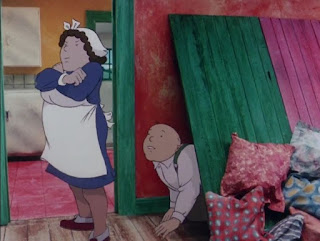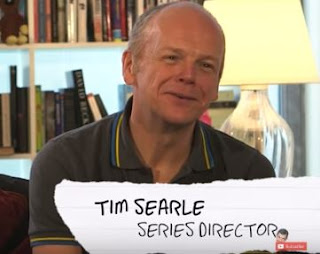'At the Ends of the Earth' is a 2D animation in which people live in a house at the very tip of a mountain, meaning that it tilted from left to right depending on which side of the house was heavier. Overall this is quite a comical animation which ends with the house falling down the mountain and becoming flat.
On the other hand, 'When the Wind Blows' is an animation based on the lives of husband and wife James and Hilda, who are a retired couple living in a cottage. James makes a shelter using the doors from his house in preparation for the drop of a Nuclear Bomb! This story follows the weeks leading to the drop of a Nuclear Bomb, in which James follows ridiculous instructions for a shelter that clearly will not save them from the effects of Nuclear radiation, e.g. rest doors at an angle of 60˚ to create a shelter, in preparation for a 'Nuclear Holocaust'. This emotional film results in both James and Hilda surviving the initial bomb drop, however they then both die from Nuclear radiation.
Below are some of the scenes from this film, as well as some shots of the scenery. This film is a mixture of 2D animation with 3D backgrounds:
A key line from this film is when Hilda says "If you can't see it and can't feel it, it can't be doing any harm." This is a fateful line as it shows that neither Hilda or James truly understand radiation. Also I feel that a really heart wrenching part is that even when the bomb has dropped and they start to feel ill from radiation poisoning. They continue to have hope and talk as though their lives will just return to normalcy tomorrow and they will be able to pop to the shops again and see the blue sky.
The film ends with them both praying to God that they will survive, but we know the devastating truth.

















































